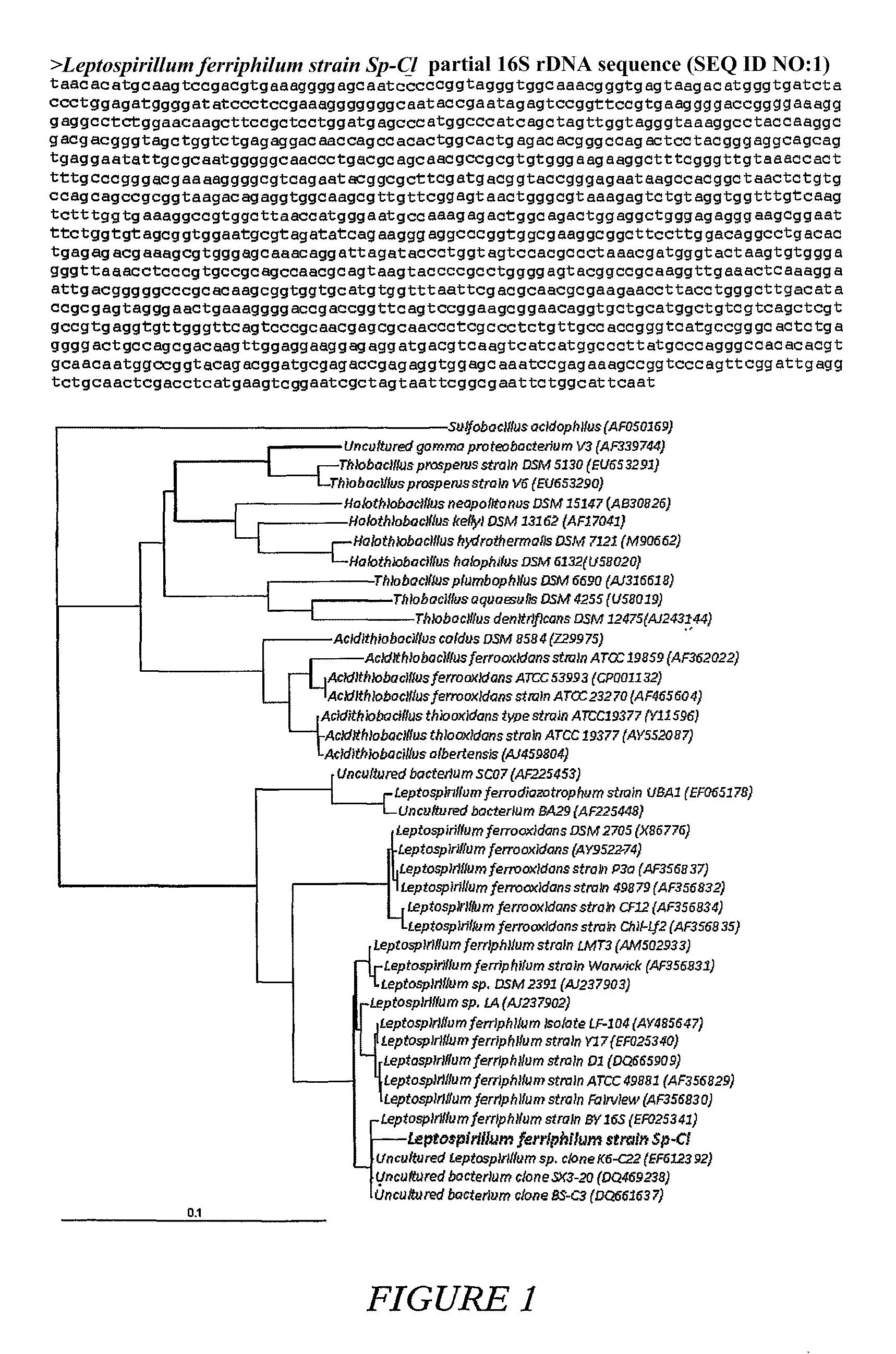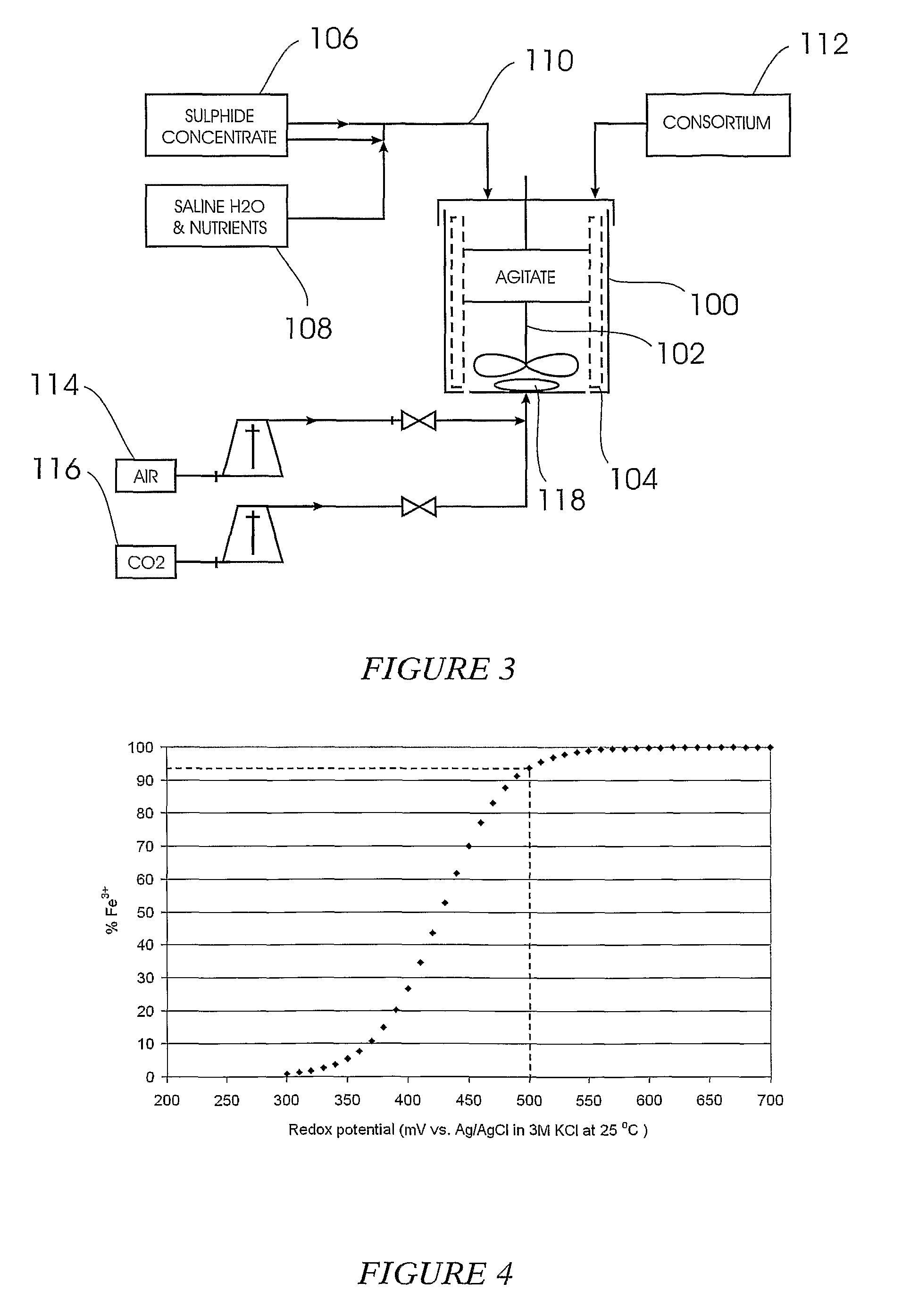Method of treating a sulphide mineral
a sulphide mineral and mineral technology, applied in the field of sulphide mineral treatment, can solve the problems of reducing affecting the efficiency of metal recovery, so as to improve the bioleaching process and improve the efficiency of bioleaching
- Summary
- Abstract
- Description
- Claims
- Application Information
AI Technical Summary
Benefits of technology
Problems solved by technology
Method used
Image
Examples
Embodiment Construction
[0053]Based on the 16S rDNA phylogeny (FIG. 1) the Sp-Cl strain belongs to the Leptospirillum genus, species ferriphilum (Leptospirillum group II). The 16S rDNA sequence3 clusters within a distinct subgroup of Leptospirillum group II with no known cultivated representatives.
[0054]The isolated Sp-Cl strain, termed Leptospirillum ferriphilum Sp-Cl, was deposited as a pure culture in the Deutsche Sammlung von Mikroorganismen and Zellkulturen GmbH (DSMZ) under the accession number DSM 22399 on 2 Mar. 2009.
[0055]FIG. 2 illustrates a heap leaching process implemented with the consortium referred to. A heap 30 is constructed from agglomerated ore on pads 32 and 34 using conventional techniques. Air 36 is sparged via a fan 38 into a manifold 40 in a lower region of the heap. Carbon dioxide from a source 42 is added at a controlled rate, typically 0.1% CO2 v / v, to the air stream.
[0056]An intermediate heap solution 44 collected in the pad 32 is optionally re-circulated to an irrigation system...
PUM
| Property | Measurement | Unit |
|---|---|---|
| temperature | aaaaa | aaaaa |
| temperature | aaaaa | aaaaa |
| concentration | aaaaa | aaaaa |
Abstract
Description
Claims
Application Information
 Login to View More
Login to View More - R&D
- Intellectual Property
- Life Sciences
- Materials
- Tech Scout
- Unparalleled Data Quality
- Higher Quality Content
- 60% Fewer Hallucinations
Browse by: Latest US Patents, China's latest patents, Technical Efficacy Thesaurus, Application Domain, Technology Topic, Popular Technical Reports.
© 2025 PatSnap. All rights reserved.Legal|Privacy policy|Modern Slavery Act Transparency Statement|Sitemap|About US| Contact US: help@patsnap.com



